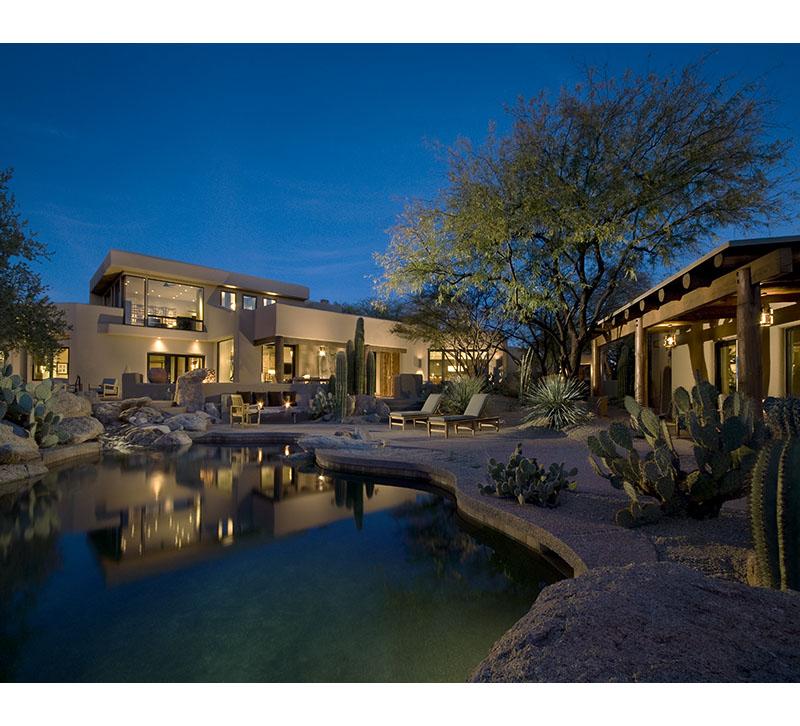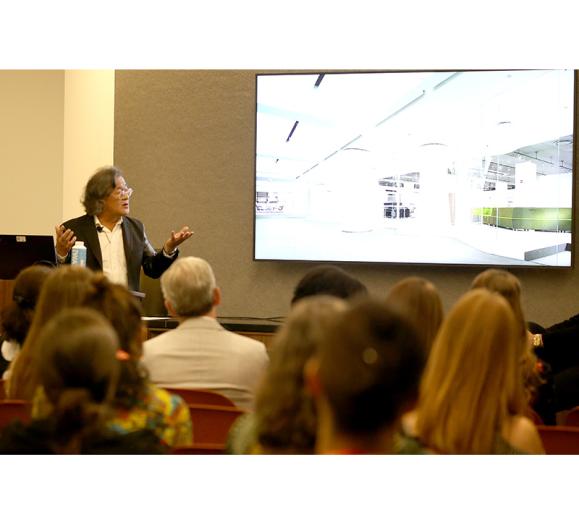As you are well aware of by now, the techniques of lighting have greatly evolved beyond simple table lamps and chandeliers. Still many homeowners have not updated their thinking much beyond this approach. It’s true that progressive design is a hot topic, but it’s not for everyone. Can new lighting techniques be applied to non-cutting edge spaces to enhance the sense of warmth and comfort that these cozy interiors inspire? The answer is a resounding... yes!
The trick is to keep the lighting upgrades subtle so that the decorative light sources can remain the architectural jewelry for a home. Chandeliers and table lamps are an important element to most all styles of residences. They are needed to provide the ambience for a room without necessarily providing all the necessary illumination on their own. This applies outside of a home as well. Adding a layer of accent lights, hidden among the plantings, allows the lanterns at the front door and by the garage to provide the illusion of providing the main light without visually overpowering the landscaping. Using high quality LED lamps, they can offer the dimmability and warm color of the more traditional incandescent lamps.
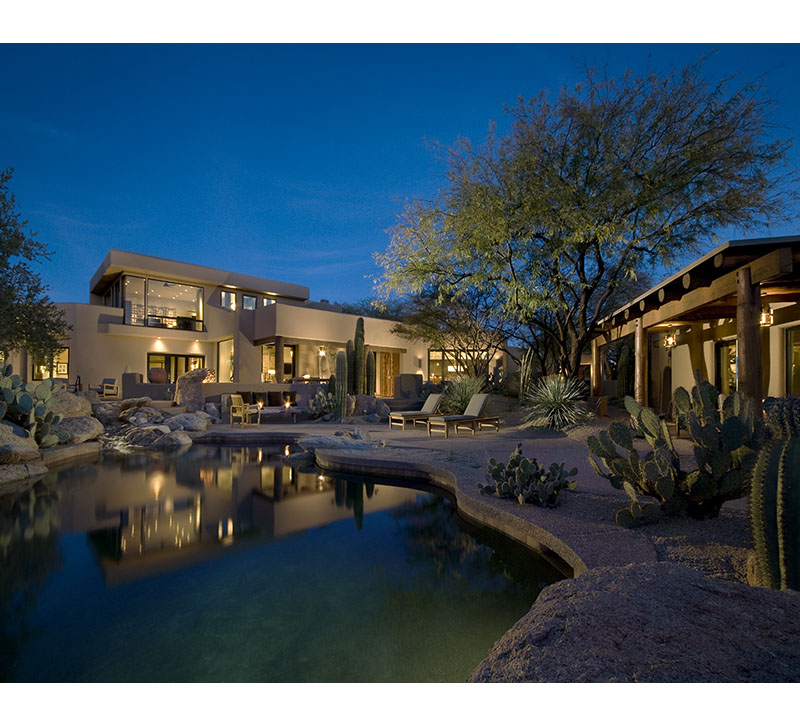
Sometimes residential lighting design takes a backseat to commercial projects, as far as use of emerging alternative lamps. Lighting for homes needs to be more subtle than that for public spaces. A restaurant or theater project can dive headfirst into the realm of fantasy design. Patrons want to be transported to a place that is a different world than what they experience at home. Yet, when homeowners are in their personal spaces, they want to be able to have various levels of functional illumination for the mundane, but ever so important tasks, that are a part of day-to-day living.
Lighting can be a tremendous force. It’s the one factor that makes all the other elements in design work together. Yet it has for so long been the last thing considered and the first item cut from the budget. Often less expensive, poorly made LED light sources are specified for a project. The result has left many homes drab, uncomfortable and dark. Too often the blame goes elsewhere, when improper lighting design and component selection is the true culprit. Becoming better acquainted with the guidelines for good lighting, layered with a better understanding of the companies who offer high-quality energy-efficient sources, will allow homeowners to work with their designers and contractors to get the best of both worlds.
I have mentioned this many times but feel that it is important information when designing the lighting for your own home or that of a client. Light has four specific duties. They are to provide decorative, accent, task and ambient illumination. No one light source, whether it is incandescent or LED (I don’t even mention fluorescent anymore) can perform all the functions of lighting required for a specific space. Understanding what these terms mean will help homeowners make better decisions that will integrate illumination into the overall design and give them what they want.
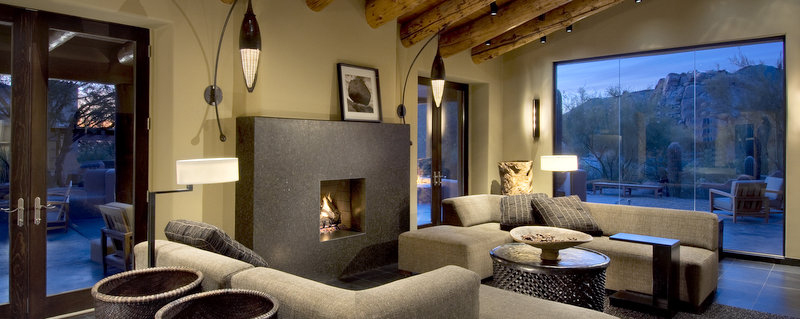
Here is a description of these four functions that puts them into terms that can be easily understood by everyone involved:
Decorative Light
Light fixtures such as chandeliers, candlestick-type wall sconces, and table lamps work best when they are used to create the sparkle for a room. They alone cannot adequately provide usable illumination for other functions without overpowering the rest of the design aspects of the space. I call them the supermodels of illumination. Their only job is to look fantastic. LED filament lamps add the sparkle without the energy consumption of incandescent sources.
For example, a dining room, illuminated only by the chandelier over the table, creates a glare-bomb situation. As you crank up the dimmer to provide enough illumination to see your guests, the intensity of the light source causes everything to fall into secondary importance. This one supernova of uncomfortably bright light eclipses the wall color, the art, the carpeting and especially the people sitting at the table.
By nature, any bright light source in a room or space immediately draws people’s attention. They won’t see all the other elements, no matter how beautiful or expertly designed. For instance, linen shades on table lamps draw too much attention to themselves when they are the only light source in a room. Consider using a shade with an opaque liner and possibly a perforated lid to help direct the illumination downward over the base, the tabletop and across your lap for reading.
Accent Light
Accent light is directed illumination that highlights objects within an environment. Light sources such as track and recessed adjustable fixtures are used to bring attention to art, sculpture, tabletops and plantings. Newer LED MR16 lamps can be used in existing fixtures to provide highlighting without UV radiation that can be harmful to art over time. Just like any of the four functions, accent light cannot be the only source of illumination in a room. If you use only accent light, you end up with the museum effect, where the art visually takes over the room, while the guests fall into darkness. Subconsciously, the people will feel that the art is more important than they are.
Good accent lighting thrives on subtlety. A focused beam of light directed at an orchid or highlighting an abstract painting above a primitive chest can create a marvelous effect. People won’t notice the light itself; they see only the object being illuminated. The lighting effect achieves its magic through its very invisibility. In the movies, if we can tell how a special effect has been achieved, we feel cheated. We don’t want to know, because we want to think it’s magic. In lighting, it should be no less the case. We want to see the effects of light, but the method needs to remain unseen. That subtlety is what will give the design a cohesive wholeness, allowing the architecture, the furnishings and the landscape to become the focus in a particular space, not the decorative fixtures or the bulbs glaring out from within them.
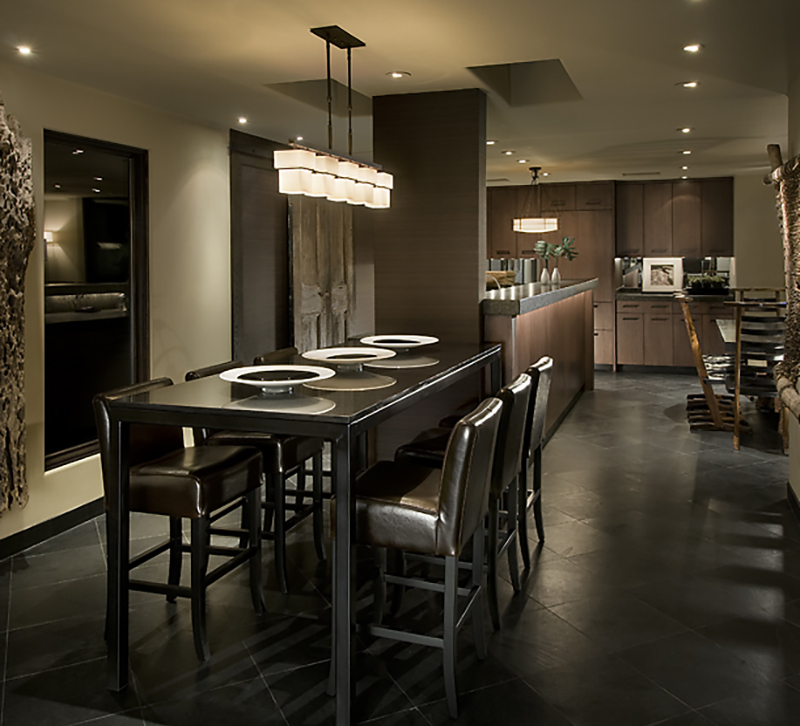
Task Light
This is illumination for performing work-related activities in the home, such as reading, cutting vegetables, and sorting laundry. The optimal task light is located between your head and your work space.
Ambient Light
Ambient light is the soft, general illumination that fills the volume of a room with a glow of light and softens the shadows on people’s faces. It is the most important of the four functions of light but is often the one element that is left out of the design of a room or space.
The best ambient light comes from sources that bounce illumination off the ceiling and walls. Such light fixtures as opaque wall sconces, torchieres, indirect pendants and cove lighting can provide a subtle general illumination without drawing attention to the light source. You could call it the open-hearth effect, where the room seems to be filled with the light of a glowing fire. LEDs can offer effective ambient light. It is important to have the ceiling finish be matte so that the light sources do not create hot spots on the surface.
Just filling a room with table lamps is not an adequate source of general illumination. The space ends up looking like a lampshade showroom. Let these lamps be a decorative source, creating little islands of light.
Ambient light, too, just like the other three functions, should not be used by itself. What you end up with is the cloudy day effect, where everything is of the same value, without depth or dimension. Ambient light alone is a flat light. It is only one component of well-designed lighting.
Light Layering, The Bottom Line
A lighting design is successful when these four functions of light are layered within a room to create a fully usable, adaptive space. Good lighting does not draw attention to itself, but to the other design aspects of the environment. An entryway desperately needs ambient and accent light, but may not need any task light, because no work is going to be done in the entry. However, there may be a coat closet, which would need some task-oriented illumination. The addition of a ceiling mounted decorative fixture helps set the tone for the rest of the house.
What we often see in various design magazines is a house lighted for entertaining only. It is a very dramatic, glitzy look. Every vase, painting, sculpture and ashtray glistens in its own pool of illumination. Yet, the seating area remains in darkness. What are these people going to do for light when they want to go through the mail, do their taxes or put a puzzle together with their kids?
In reality, people entertain only part of the time. The rest of the time these rooms are used to do homework, clean and interact with other family members or guests. This doesn’t mean that you should eliminate accent lighting. Just don’t make it the only option. Simply putting ambient light on one dimmer and accent lighting on another provides a whole range of illumination level settings. Don’t forget to add a layer of task light and decorative light to the mix as well.
If once the installation is done and someone walks in and say, "You look great!" or "Is that a new painting?" then you know the lighting is successfully integrated into the overall room design and that you have done a good job.
Images: Lighting Design: Randall Whitehead; Interior Design: Turner Martin Design; Photography: Jeff Zaruba



